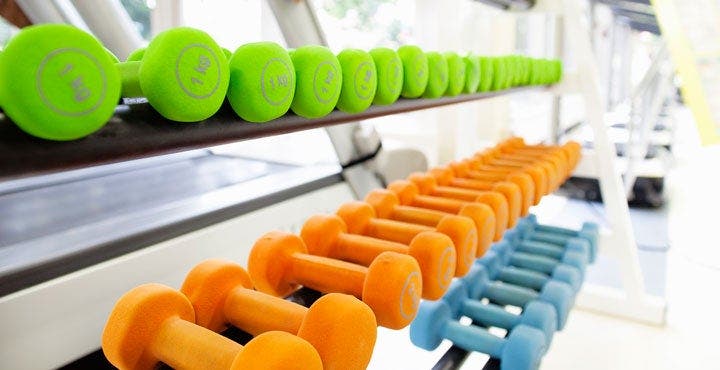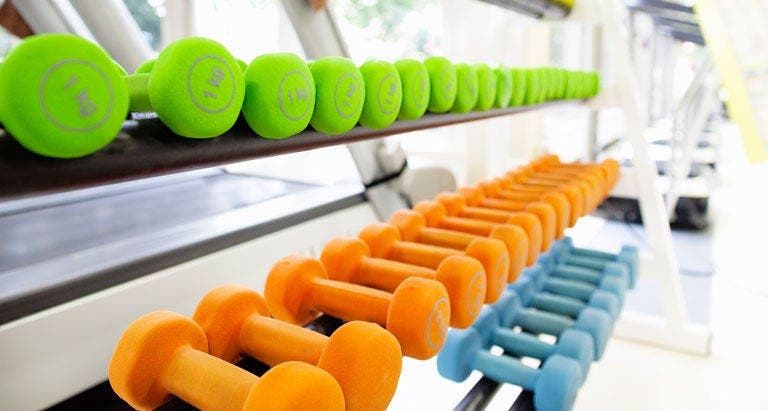Why strength training is so good for you


If you’ve been exercising and eating right and you’re still not seeing or feeling the results you want, it might be time to spend some time lifting things up and putting them down.
“It can completely enhance your quality of life,” says Adrian Hutber, PhD, vice president for the American College of Sports Medicine’s Exercise is Medicine initiative. Strength training keeps muscles flexible, strengthens bones, increases joint mobility, and improves other signs of aging.
Not quite sold? Here are six reasons to look to strength-training to help improve your health.
1. Keep your ticker ticking.
If you lift weights, your heart will thank you. Resistance training can help lower your blood pressure, according to a research review in the Journal of the American Heart Association. This, in turn, can lower your risk for heart disease. Isometric resistance training, where the angle of your joint doesn’t change—such as holding yourself in a plank position—may be most beneficial for lowering systolic blood pressure (the top number), according to this review.
2. Strengthen your bones.
According to the National Osteoporosis Foundation, approximately 10 million Americans have osteoporosis, and another 44 million have low bone density, which increases their risk for the disease. Sometimes, losing a lot of weight or shedding pounds quickly can have a negative effect on bone density in older adults. WeightWatchers® promotes a safe rate of weight loss of up to 2 pounds per week which should help protect bone health especially if combined with strength-training, which research has suggested can help maintain and possibly improve bone density, even during weight loss.
You don’t have to be a powerlifter for stronger bones. Lifting light weights for a higher number of repetitions may be just as beneficial as lifting heavier loads for bone health, according to a small, preliminary study published in a 2017 issue in The Journal of Sports Medicine and Physical Fitness.
3. Lower your diabetes risk.
Type 2 diabetes is a serious health condition that’s reaching epidemic proportions, says Hutber. Increases in muscle mass and stronger mitochondria—the energy center of cells—as a result of long-term personalized resistance-training programs may positively impact insulin responsiveness and glucose control in some individuals with type 2 diabetes, according to a scientific review published in the journal Nutrition & Metabolism in March 2017.
4. Support your weight loss goals.
“If you’re trying to lose weight, resistance-training can be a helpful addition to a healthy diet and exercise routine,” says Baltimore-based exercise scientist Erica Suter, CSCS. The average weight-training routine will only help you look and feel leaner, but it won’t necessarily change the numbers on the scale.
This is because muscle is a denser and more metabolic tissue than fat. Strength-training develops muscle mass. “The more muscle you have, the harder your body is working to burn calories at rest,” she says. Think of it as getting an extra bang for all the hard work you’ve done.
5. Have energy and strength to do what you love.
Strength-training not only improves body composition, which can affect health in positive ways, but it also improves other areas of your life, says Suter.
“Maybe you're a runner and you want to not get sore at the end of a race, or maybe you play co-ed sports and want to get faster,” she says. “Whatever it is, strength-training will make you more resilient for the everyday demands of life.”
6. Feel more confident.
Let’s face it: resistance training is hard work, and it forces you to push your limits. But it’s worth it for how great you’ll feel about yourself as a result, says Suter.
“There's nothing more empowering than getting your first pull up or doing a perfect push-up. Strength-training is a great way to chase performance goals,” she says.
Ready, set, lift
Convinced of the health benefits of strength training, but a little nervous to start? That’s normal, but try not to sweat it, says Suter. Try starting with bodyweight exercises, such as squats, dips and push-ups.
“Everyone has been a beginner and you're moving yourself in the right direction to a better body and mind,” she says. “The key is to start off slow and listen to how your body feels as you progress in weight, as well as ensure you're doing proper form with each exercise before you increase intensity.”
